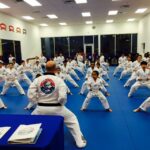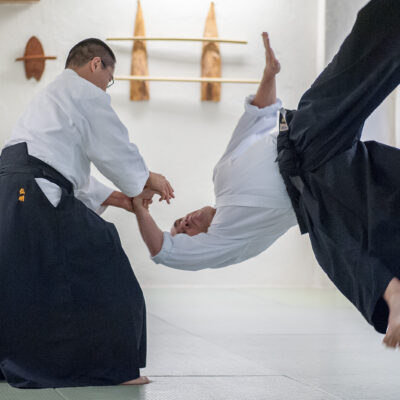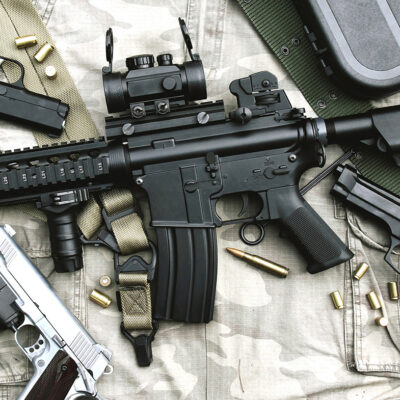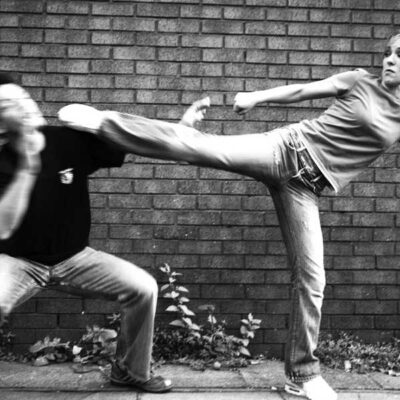We often talk about our martial art not being a sporting art, since there are “no rules to self-defense” or “no refs in a street-fight”. However, that is not entirely correct. In fact, there are quite a few rules regarding self-defense and impacts that extend beyond just the physicality of the encounter.
These…are questions that Law Enforcement Officers consider before deciding whether or not to charge you with a crime, and Judge and Jury consider to convict.
If you take martial art classes here, you may have heard us say “fights end first on the ground – and then in court.” That is to say there are legal consequences to every self-defense situation that require measured action.
Laws look at self-defense in context of the force required to stop an attack to determine whether it was appropriate to the situation or if it was excessive. For example, if someone punched you and you stabbed them – would that be considered excessive or appropriate? It really depends on the context. Is the attacker bigger than you? Did you try to escape? Did they display the intent of killing you or is it just a bar fight? Was there more than one of them? Did the wound you inflict on them end-up killing them? How ‘well trained’ are you? Are there witnesses and what will they say happened?
These and many more are questions that Law Enforcement Officers consider before deciding whether or not to charge you with a crime, and Judge and Jury consider to convict. Law Enforcement Officers themselves are subject to these laws on duty – even more so since they have a greater responsibility bestowed upon them. Even with combat, there are rules to gauge the actions of soldiers on a battlefield.
These laws exist so that the answer isn’t to every altercation to take someone’s life. It is up to you to measure the response as appropriate. And while it requires escalating force to stop or stall an attack (if someone is hitting you – screaming is not going to stop them, but kicking their groin might), it has to be measured to what is appropriate to the situation.
I am not a lawyer, so in this case the answer to this aspect of Self-Defense falls outside the realm of Martial Arts. This is a better question to discuss with legal council or with Law Enforcement.
I will say this: “better to be judged by 12 then carried by 6,” meaning that it’s better to survive and face possible legal consequences than to die and save money on hiring a lawyer. My only advise would be to say this simple phrase: “I was in fear for my life,” since it affords greater leeway than saying “I wanted to teach them a lesson”. Just make sure everything else supports that statement.
The act of inflicting injury, or worse taking a life, is traumatic and not enjoyable.
There is also a psychological impact to a self-defense encounter, even if you successfully defend yourself.
Most people think of the confidence aspect to Martial Arts and Self-Defense training – and rightly so. Any activity that you become proficient in will give you confidence. We have students that are survivors of attacks that are looking to ‘regain control’ and build confidence to defend themselves. And although they all did the right thing – since they managed to survive – they train to give themselves more options, to fight from being helpless.
It’s this aspect of self-defense that builds confidence – learning how to not become helpless and more aware. However, the confidence comes from greater understanding of the dynamics and responses available to deal with an attacker – not going out and starting fights. And while being able to fend off an attacker gives a sense of validation, it also carries other impacts.
Many people suffer from PTSD (Post Traumatic Stress Disorder) following an extreme self-defense situation. Police Officers often face this when they have to shoot someone on duty – even if it was justified. Law Enforcement trains on how to be effective shooters, but they hope they never have to use this skill.
The act of inflicting injury, or worse taking a life, is traumatic and not enjoyable. Also, the stress of a situation where you may have suffered grave bodily harm – even if you actually didn’t – can be traumatic. It all depends on the situation, and the person. It is normal to feel bad about hurting someone, even if it was stop them from hurting you.
There can be other psychological impacts beyond what’s described above. Again, I am not a psychologist. I would advise anyone to consider therapy to deal with the impact of a self-defense situation, or at minimum to consult with one regarding the impacts of defending yourself.
…what we mean is that you can be attacked in any way….
When we say “there are no rules” to Self-Defense, what we mean is that you can be attacked in any way. In fact, someone who has attacked you has already violated the law. We’re really referring to the fact that there are no sporting rules to self-defense in terms of the aggressor – what they choose to do is what you’ll have to deal with.
However, there are still consequences for your actions when defending yourself against the choices an aggressor makes. And the law is on your side to defend yourself. Where things go wrong is when the defender over reacts to such an extreme that they become defined as the aggressor.
And no matter how things play out – there is always a psychological aspect to every encounter. This is an important part of the mental training of self-defense; to be able to control your reactions to what is appropriate.
This is why we focus our training on surviving – not winning a fight. If conflict can be avoided – you’ve already “won”. If one simple technique can afford you the opportunity to escape – put a mark in the “win” column. If you train because you want learn how to beat someone up, or stand there toe-to-toe, be prepared for legal and psychological hardship.






